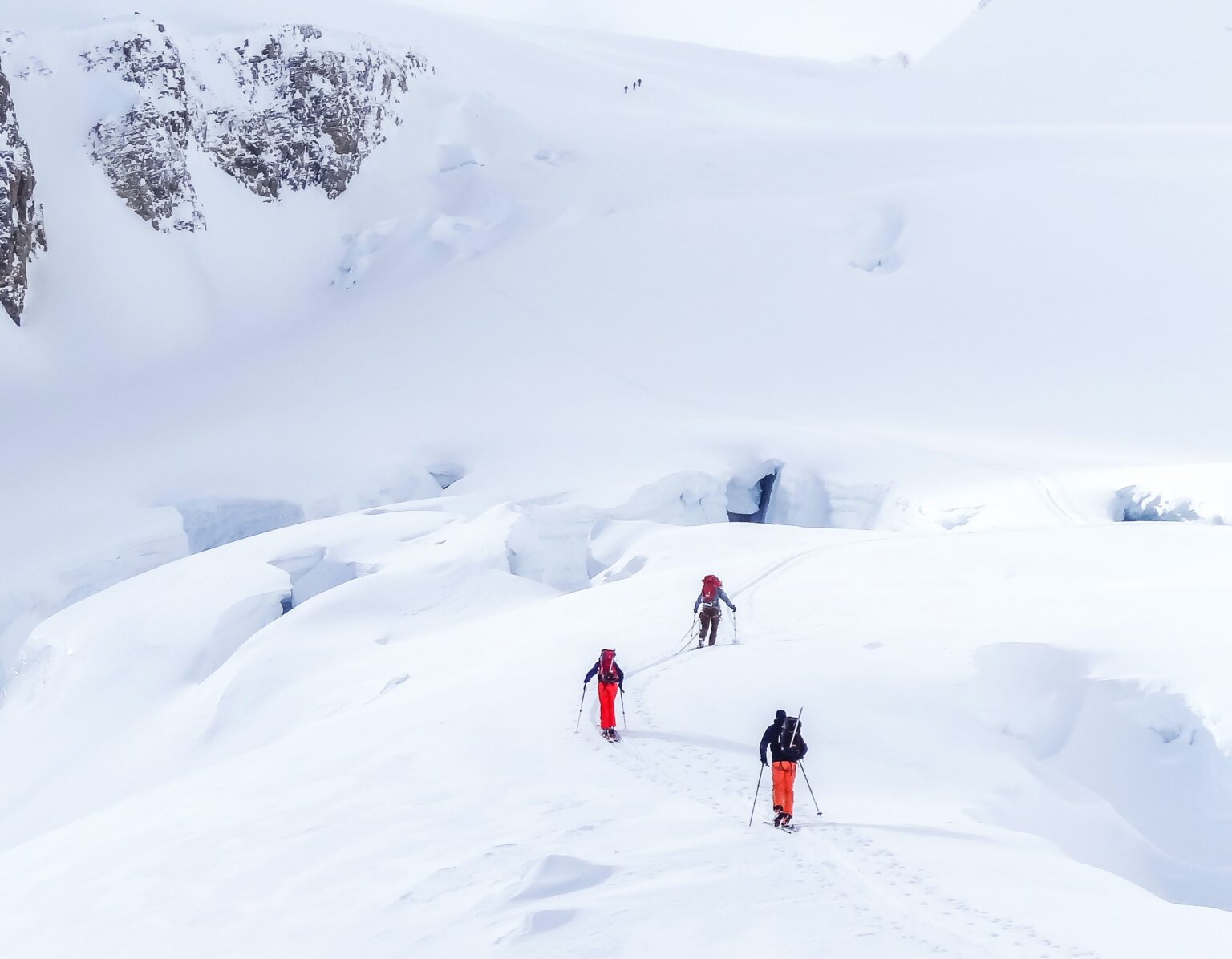Why good skiers make bad calls


When I started training as a guide, the focus was on environmental factors and the mechanics of avalanches. Very quickly, people recognised that these natural events are going to happen, and no amount of poking, pulling, digging and sawing will help if the decisions we make put us in the wrong place at the wrong time. Sometimes good decision-making is not so easy because humans are not very good at understanding risk. From aviation to medicine, social sciences have been exploring why skilled people still have dumb accidents. All the time.
Don’t get me wrong, I’m no safety nerd. I am a huge advocate for risk-taking. You wouldn’t dream of trying to learn French without speaking French. So don’t believe you can learn how to assess and manage risk without taking some now and then. But to make good decisions, you need to know and understand the risks you are taking.
In the early 2000s, avy researcher Ian McCammon analysed avalanche accidents and found six classic decision-making traps (‘Heuristic Traps in Recreational Avalanche Accidents’) listed here under the acronym FACETS. These can help explain why we get giddy and find ourselves taking greater risks than we might have expected, and making duff calls, in the backcountry:
“Parties travelling in familiar terrain made riskier decisions than parties travelling in unfamiliar terrain. This effect was especially pronounced for parties with substantial experience and training.”
Ever found yourself thinking (or saying), “hey – we can head to the trees at XXX, it’s always safe over there”? If so, you are falling into the trap of making decisions based on sometimes hazy and outdated memories, rather than the evidence in front of you. And for those of us who are here for the season, or well trained and think we are wise to all this, beware… it turns out we take even greater risks on our home patch.
We will go to extraordinary lengths to fit in and be accepted by members of our team. “Accident parties that included females made riskier decisions than parties of all males. The effect was most pronounced in parties with little avalanche training. It is notable that these were precisely the parties in which women were least likely to participate.”
Ever found yourself thinking: “I think this is a duff call, but I don’t want to be the party pooper.” It’s best to question whether you are really prepared to risk it all, just to fit in.
“Parties that were highly committed to a goal – a summit, ski slope or an objective in deteriorating weather – made riskier decisions than parties just out for a day. This effect was most pronounced in parties of four or more.”
I’ve said it before and I’ll say it again a million times: always make sure you have a suitably appealing plan B, C or D, so that when you get that twitch, backing off plan A is easier to swallow. Teams who get set on a plan, then fail to readjust, are on a dangerous track. Especially when it is so tricky to come back with nothing. Talking of which, beware the Sunk Cost Fallacy. Stolen from the world of behavioural economics, and just as true in business as in avalanche terrain, it turns out we are super-motivated to avoid any kind of loss. By the time we have ‘invested’ (financially, or in metres and hours of skinning, in our case) it becomes really hard to let it go and come back empty handed. Hence people find themselves skiing things they would have ruled out as crazy, if asked at the start of the day. Ever been there? I have! To recognise it is the only way to avoid it.
“Accident parties often contained a de facto leader – someone who was more experienced, older or more skilled. Novices were more likely to follow the leader into dangerous situations than when novice groups made decisions by consensus.”
As a guide, I always encourage my group to question and challenge my decisions. If you want the best example of this, watch Solving for Z on YouTube. This is one of the best films ever made about the reality of decision making. Then all you really need to know is that many people have recognised the dangers before them, and then watched pilots crash planes, surgeons kill patients and ‘experts’ get avalanched, just because they weren’t prepared to speak up.
“Parties took more risks when they were racing a closing window of opportunity, such as competing with another group for first tracks.”
In the early season feeding frenzy of Val d’Isère last month, the competition for freshies was tangible. Just when people needed to be carefully weighing up the odds, they were rushing anywhere and everywhere to get there first. Hence, sitting neatly between tracks and social pressure is a personal favourite soap box.
We all recognise the “they’ve skied it, so why can’t we” pressure. Truth is, the tracks of others DO NOT mean things are safe. That week, we watched the seventh team trigger a particularly delicate slope – with disastrous consequences. So let’s get a couple of things straight:
“When skilled parties met other people in the backcountry, they were more likely to take risks than parties that were less skilled. This effect was most pronounced in groups with the highest levels of training.”
There are a few ways this trap can manifest itself:
So here’s the punch line. Go to the mountains and have adventures. Take risks, but be aware that the more you understand those risks, the better decisions you can make. I wish you a long, happy lifetime of such rewards.
More from Fall Line on backcountry skiing: